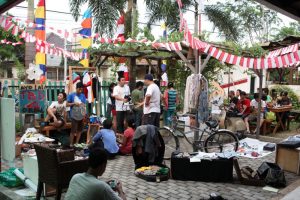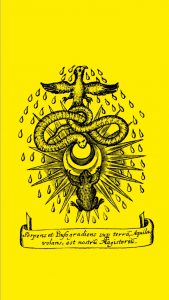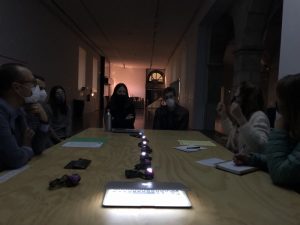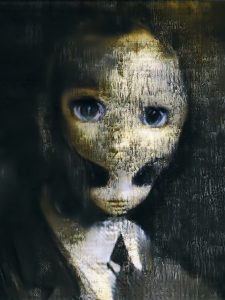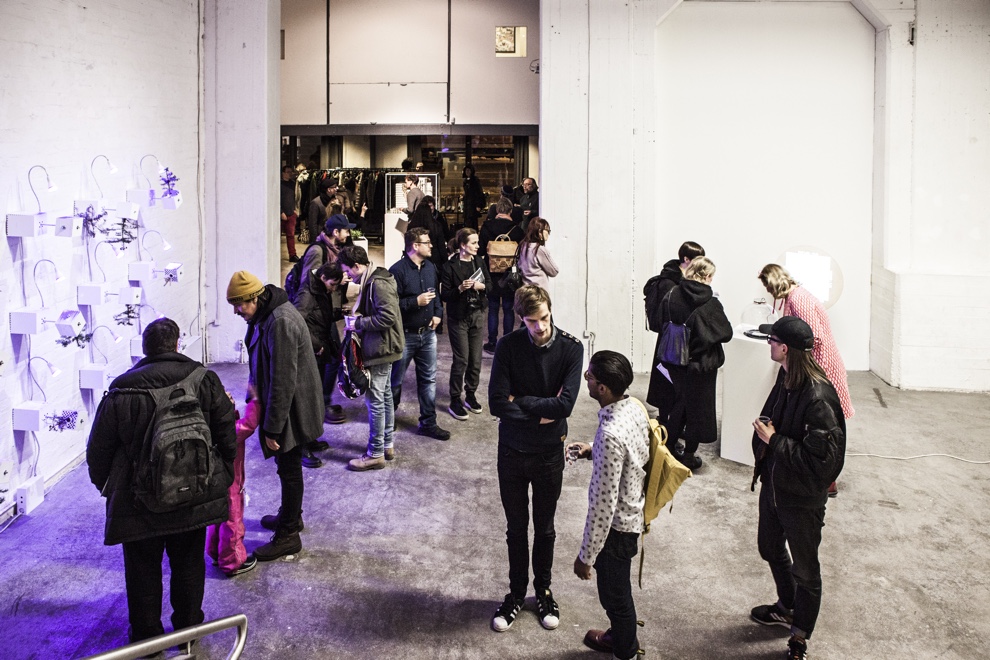
Exhibition opening. Photo by Anna Autio
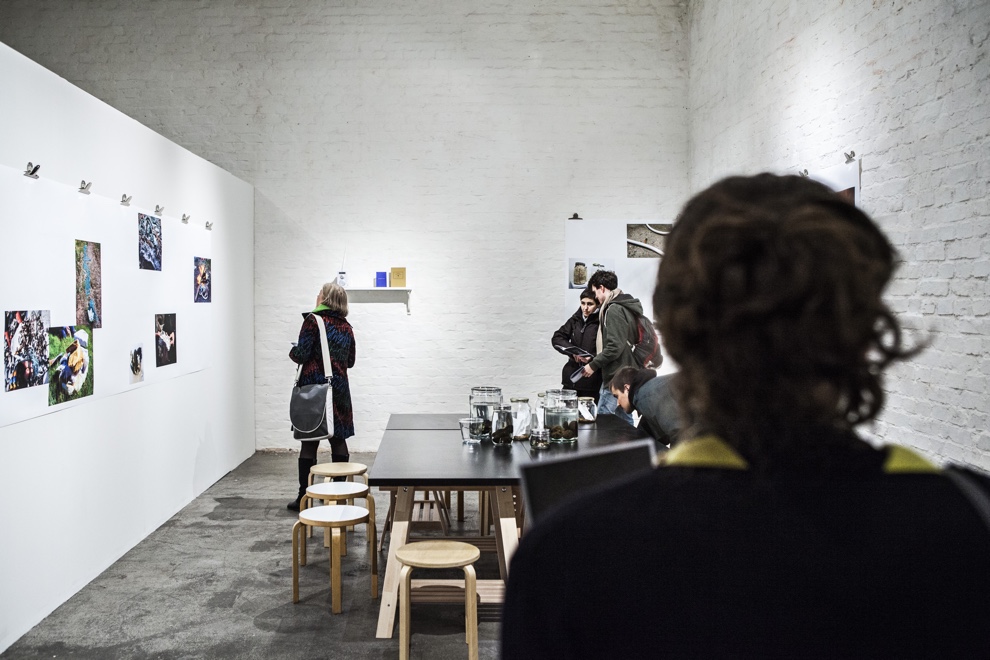
Exhibition opening. Photo by Anna Autio
The focus of the Nordic art&science network program HYBRID MATTERs is the hybrid ecology that emerges when our environment interacts with technology, when two spheres so far regarded as independent start to affect each other and form new entities with new qualities.
The HYBRID MATTERs exhibition which closed last month at Forum Box in Helsinki showed works, experiments and proposals which expose and explore this complicated liaison between our environment and technology.
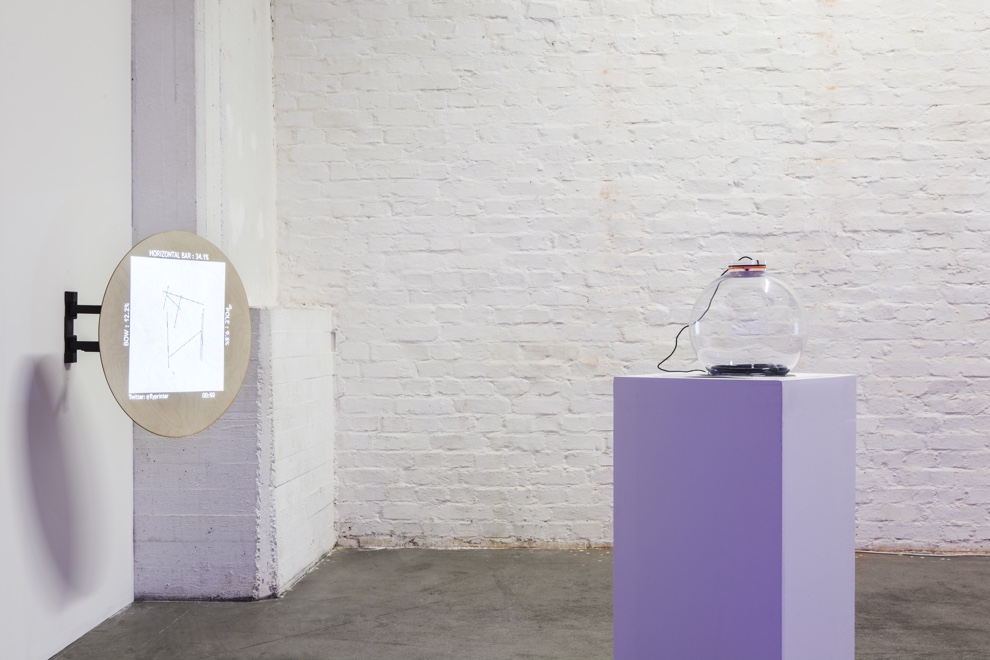
Laura Beloff and Malena Klaus, Fly Printer – Extended. Photo by Anna Autio
With art pieces that address plastic proliferation, global warming, the modification of species to satisfy capitalistic forces or the exploitation of natural resources, HYBRID MATTERs conjures all our darkest fears about the anthropocene. I would normally exit this kind of exhibition with a deep sense of doom and despair. This time however, the poetry, pertinence and also often the sense of humour embedded in the works took over and as i walked back to the hotel, i found myself thinking that we might still be able to make sense of the mess we’ve been so busy creating over the past few centuries. A twisted sense maybe but one that gives me hope nevertheless. The show also left me looking at the world with even more questions than ever…
How do we fit in this hybrid ecology made of genetically engineered trees and machines that seem to gently breathe? How much in control of the hybridization process are we really? Should we expand and embrace new concepts of ecology or should we fight for our vision of an ideal (and possibly also outdated) ecology?
HYBRID MATTERs aims to provide a possibility to rethink and reevaluate our relations to this emerging world. As we humans drive this process of hybridization we are part of both the biological and technological. HYBRID MATTERs asks how we can address both ends and develop respectful and mutually beneficial forms of co-existence for all the actors in such a hybrid ecology.
I’ve already written about Laura Beloff and Jonas Jørgensen’s take on our postnatural Christmas trees and about Mari Keski-Korsu’s guerilla experiments in DIY climate manipulation. Here are some other works i found particularly interesting (or just beautiful to look at because i’m superficial like that) while i visited the show:

Åsa Ståhl and Kristina Lindström, Plastic Imaginaries, 2016. Photo by Anna Autio

Åsa Ståhl and Kristina Lindström, Plastic Imaginaries, 2016. Photo by Anna Autio

Åsa Ståhl and Kristina Lindström, Plastic Imaginaries, 2016. Photo by Anna Autio
Plastics used to symbolize man’s mastery over nature. Today, they only evoke man’s poisoning and corruption of it. Plastics have invaded the ecosystem so intimately that researchers have identified a new kind of geological entity made of plastics, basalt stone, corals and more. They call it plastiglomerates.
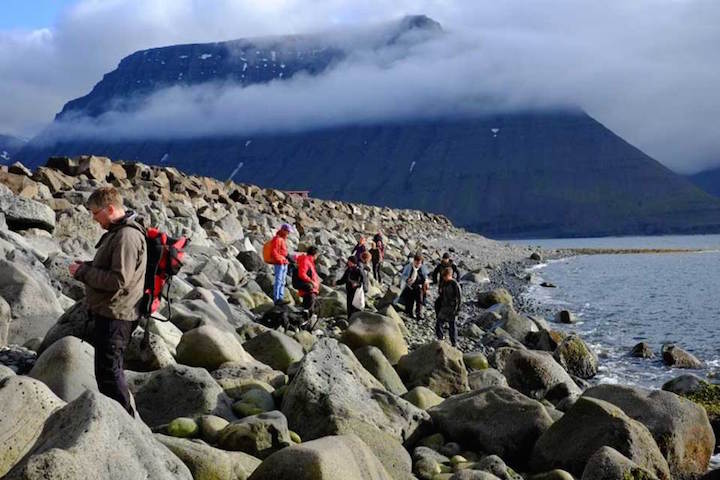
Plastiglomerate walk organised by Åsa Ståhl and Kristina Lindström. Photo by the artists
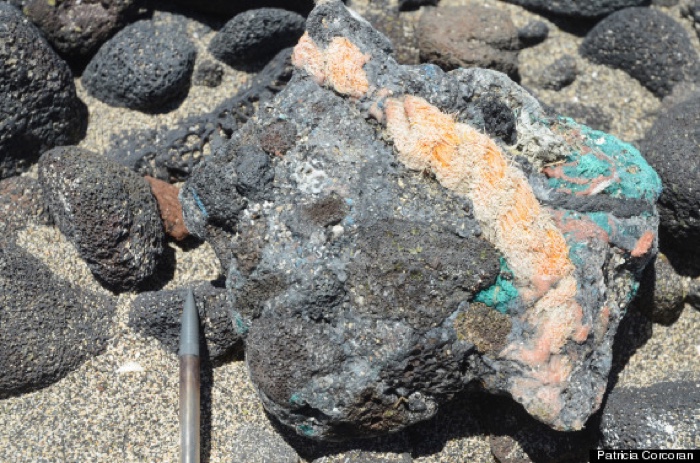
Plastiglomerate found on Kamilo Beach, Hawaii. It combines basalt clasts, molten plastic, yellow rope, and green and red netting
Concerned by this plastics invasion, artists Kristina Lindström and Åsa Ståhl started looking into new places for plastic trash into our daily lives. They soon found some found for thought in a paper that details how common mealworms can biodegrade Styrofoam. The worms seem to be able to live on this depressing diet. It doesn’t even impair their ability to reproduce. Better yet, the animals digest and turn the plastic trash into a substance that can become a new soil component.
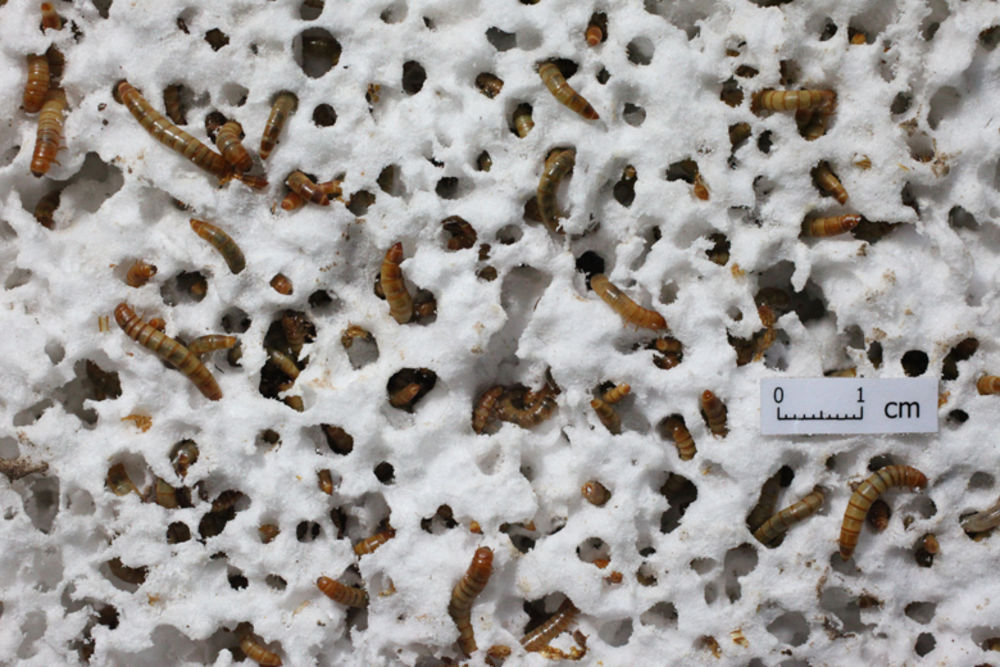
Mealworms eating Styrofoam. Wei-Min Wu, a senior research engineer in the Department of Civil and Environmental Engineering, discovered the larvae can live on polystyrene. Image credit: Yu Yang
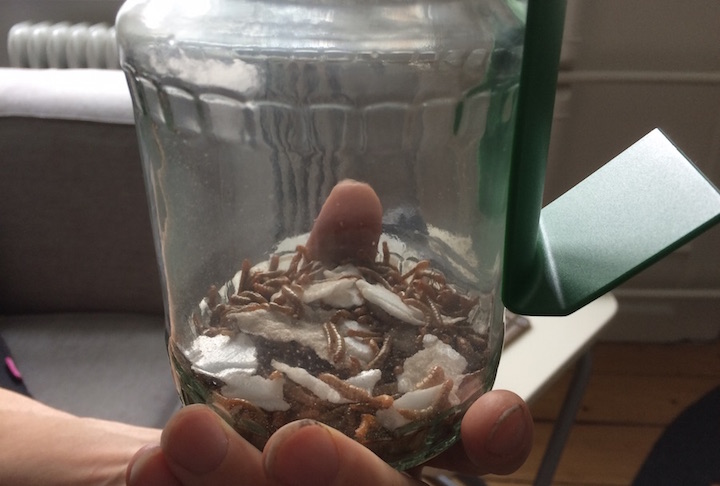
Composting plastics. Photo by the artists
Just like the plastiglomerates, the Styrofoam-eating worms are examples of unintentional ‘encounters’ between man-made matter and natural matters. “We are curious about what these examples tell us with regard to whether we should or can continue to live with or without plastic in the future. These hybrid materials could be an asset in new design and offer potential for species to coexist,” said Kristina Lindström in an interview.
Ståhl and Lindström have since developed prototype kits for composting plastic. Their content is simple: a glass jar with mealworms and bit of extruded polystyrene inside. The duo then distributed the kits to participants around the Öresund Region to compost plastic waste into their home. Some of the participants regarded the mealworms almost as pets, found it cruel to give them styrofoam as snack and eventually fed them a ‘healthier and more natural’ diet. Others never managed to shrug off the disgust they felt for worms and found it difficult to welcome them inside their home.
The Plastic Imaginaries research project hints at a future where we might be able to find new roles and spaces in the ecology for plastic trash. Could one day plastic trash benefit the ecology instead of asphyxiating it slowly?
The morning after the opening of HYBRID MATTERs, Ståhl and Lindström organized a Composting Plastics workshop. Participants learnt how to DIY their own domestic plastic composting kit and at lunch they enjoyed a vegetarian meal while mealworms got to munch on styrofoam inside their little glass jars.
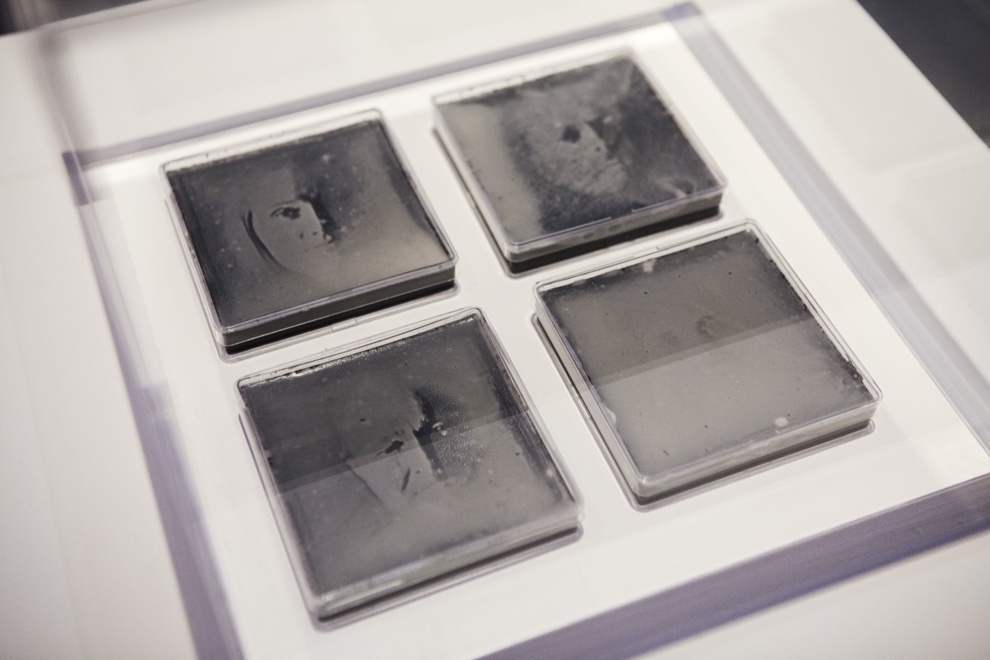
Johanna Rotko, Yeastograms – Living Images, 2016. Photo by Anna Autio
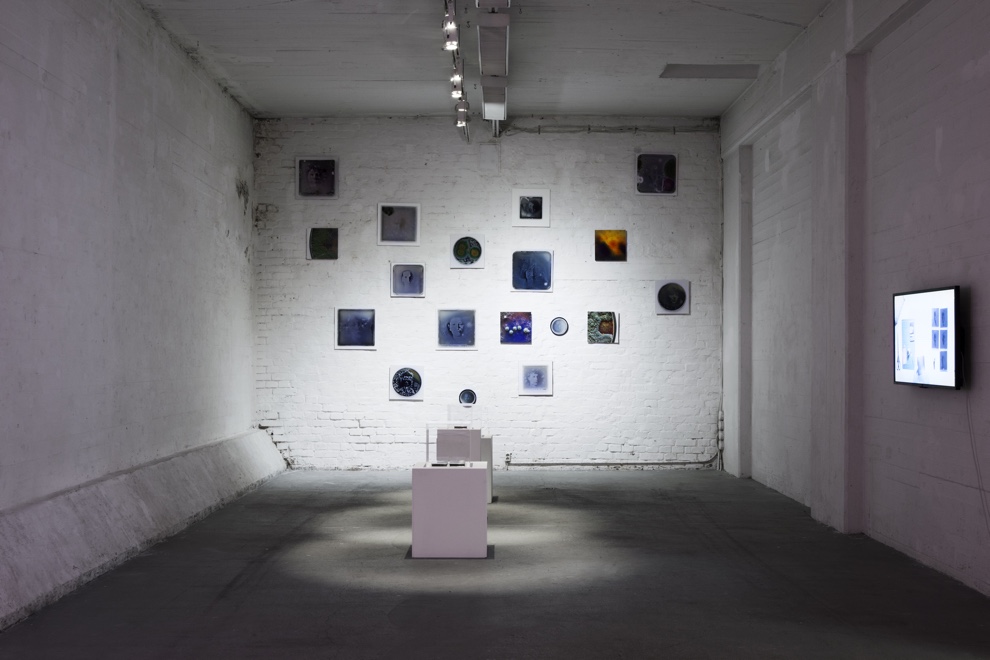
Johanna Rotko, Yeastograms – Living Images, 2016. Photo by Anna Autio
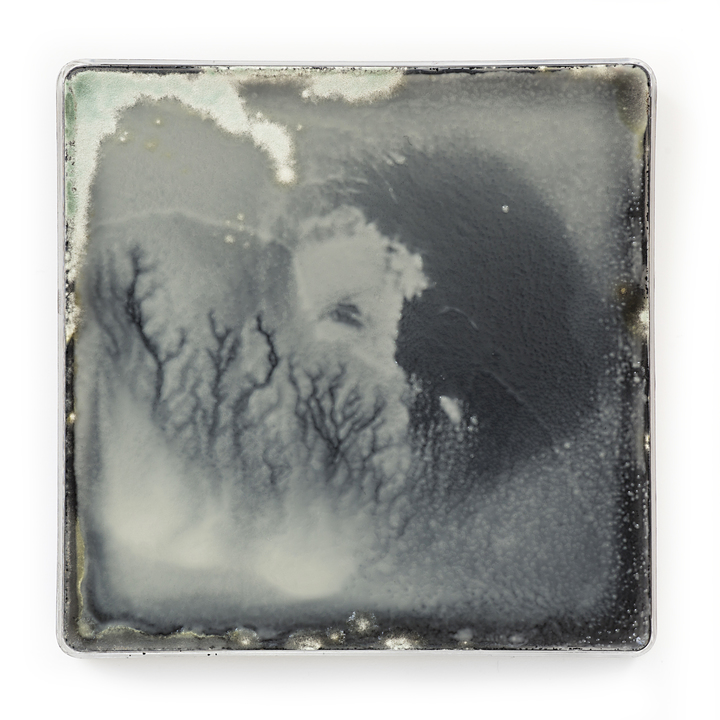
Johanna Rotko, Yeastograms – Living Images, 2016
Yeastograms in Hybrid Matters exhibition in Forum Box, Helsinki
Yeastograms are living portraits of strangers whom Johanna Rotko met on the street. They are made of yeast cells cultivated on growing mediums. The developing process consists in exposing a raster image with Ultraviolet LED lamps onto the yeast. The UV-lights kills the cells that are not protected by the stencil. A photo gradually emerges from the surviving yeast cells. After the exposure the artists leaves the petri dishes as they are but regularly documents the evolution of the images by photographing them. Over time conflicts may arise when molds, bacteria or other unknown microorganisms appear in the petri dishes.
Because her artistic research explores how nature is affected by her actions, Rotko favours the use of image-making substances and processes that are as less toxic as possible. She has thus expanded her research to anthotypes where she prints photographs using plants such as microalgae spirulina, beetroots, blueberries and coffee. As for the yeastograms, they end up in the biowaste bin.
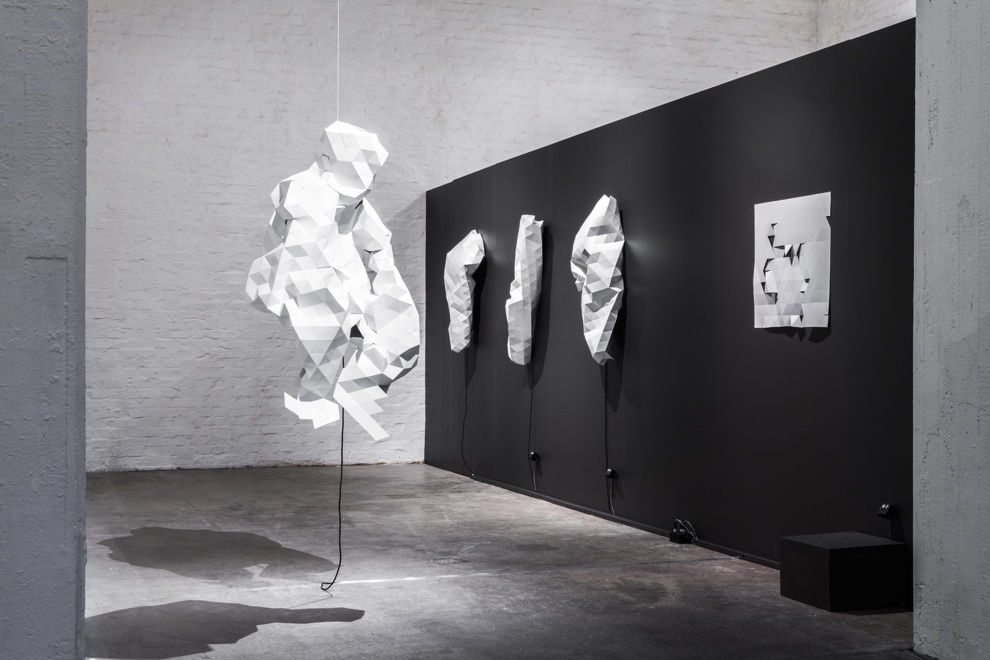
Lawrence Malstaf, Folding, 2016. Photo by Anna Autio
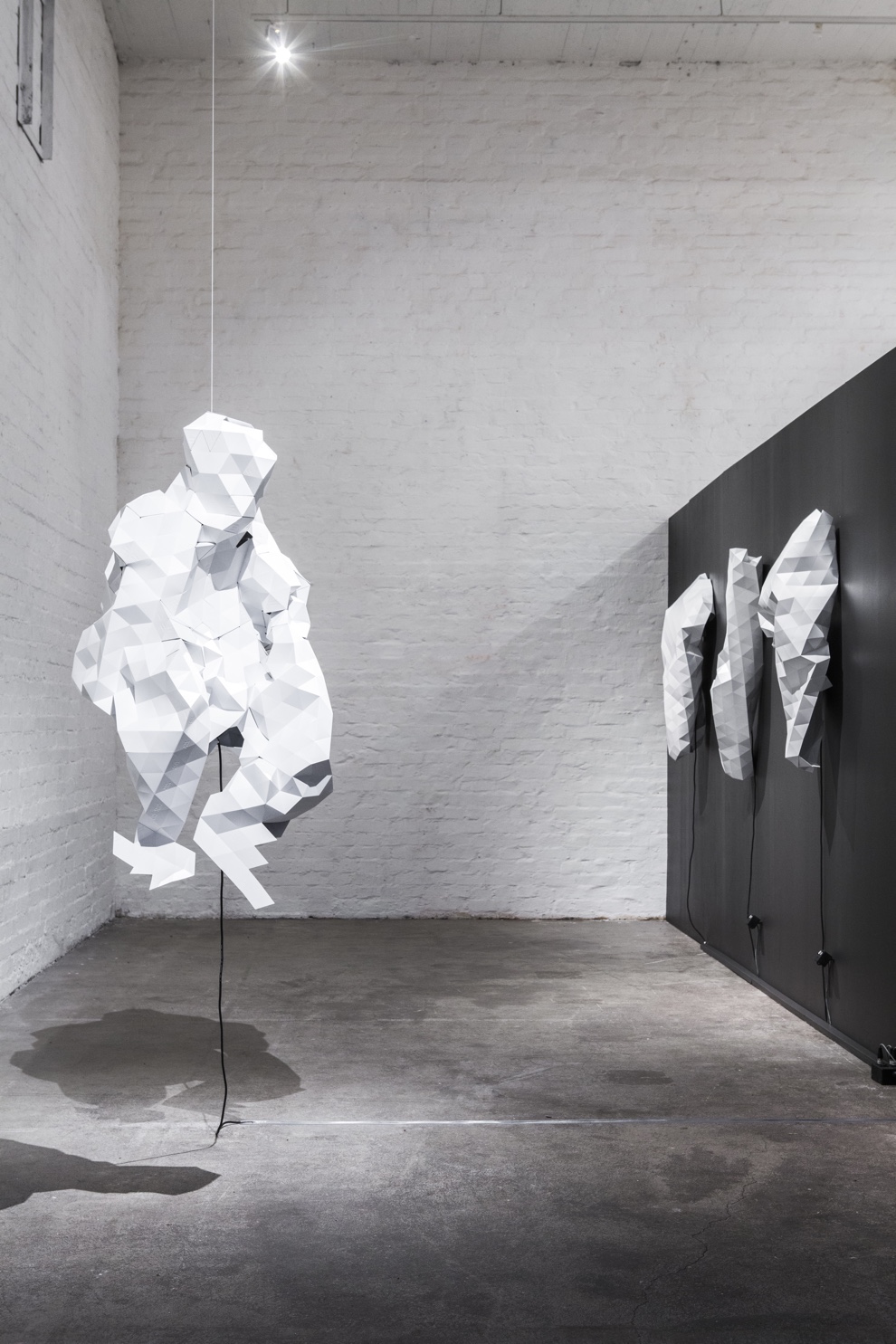
Lawrence Malstaf, Folding, 2016. Photo by Anna Autio
We are continually striving to be objective, we try to look from a distance, and we develop all kinds of technology to accomplish that, which is of course very interesting, but in a way this objectivity is something we know we will never really achieve, it’s a bit of an illusion. – Lawrence Malstaf
Folding combines 3D scanning, modeling software but also traditional origami techniques to build life-size kinetic sculptures and explore the boundary between representation and abstraction.
The sculptures expand, contract, and react according to how close you approach. Whether they are abstract models stuck on a wall or a human-like figure hanging from the ceiling, the sculptures have a clean and almost cold aesthetic but each of them seem to take an uncanny life in your presence, they breathe gently as if trying to communicate with the visitor…

Kristiina Ljokkoi, Life Studies, 2016. Photo by Anna Autio
Life Studies is a city inside a terrarium. The total absence of humans in this micro city means that other forms of life are taking over the infrastructure and thriving: wood-decaying fungi and bacteria are breaking down the infrastructure and producing a substratum for new epochs.
With this work, Kristiina Ljokkoi looks at the changing idea of a city. For as long as we can remember, the role of the city was to shelter centres of human activities from the so-called untamed nature, be they wild beasts or weeds. The time has now come to reconsider the role of the city and its place in the broader ecosystem.

Antti Tenetz, Wolfland, part of JÄLESTÄÄ TRACING. Photo by Anna Autio
Antti Tenetz, TRACING – JALESTAA trailer
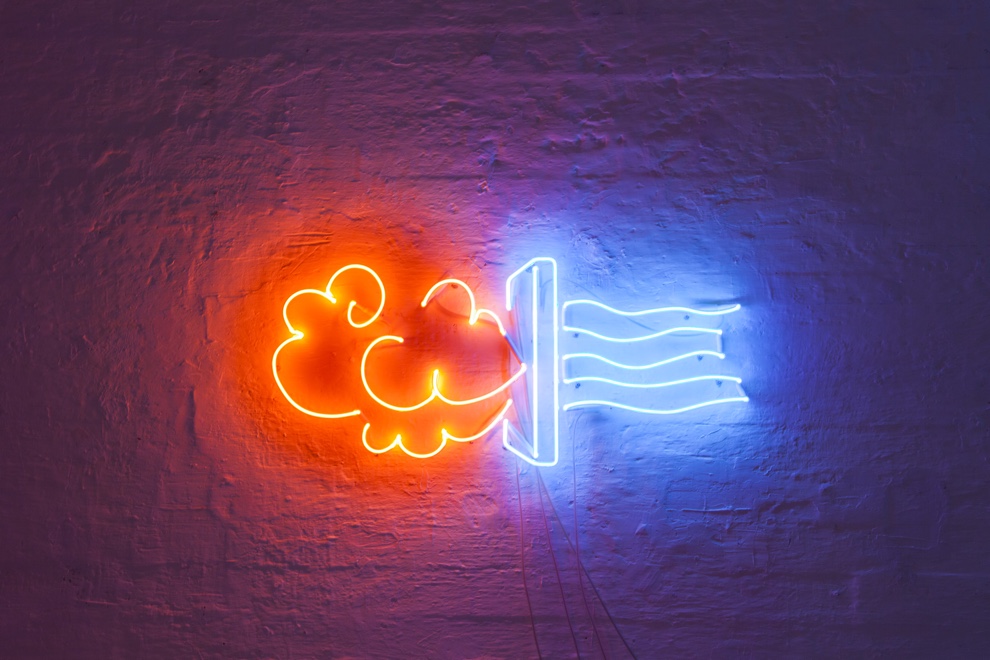
Hanna Husberg, In the Vast Ocean of Air, 2016. Photo by Anna Autio
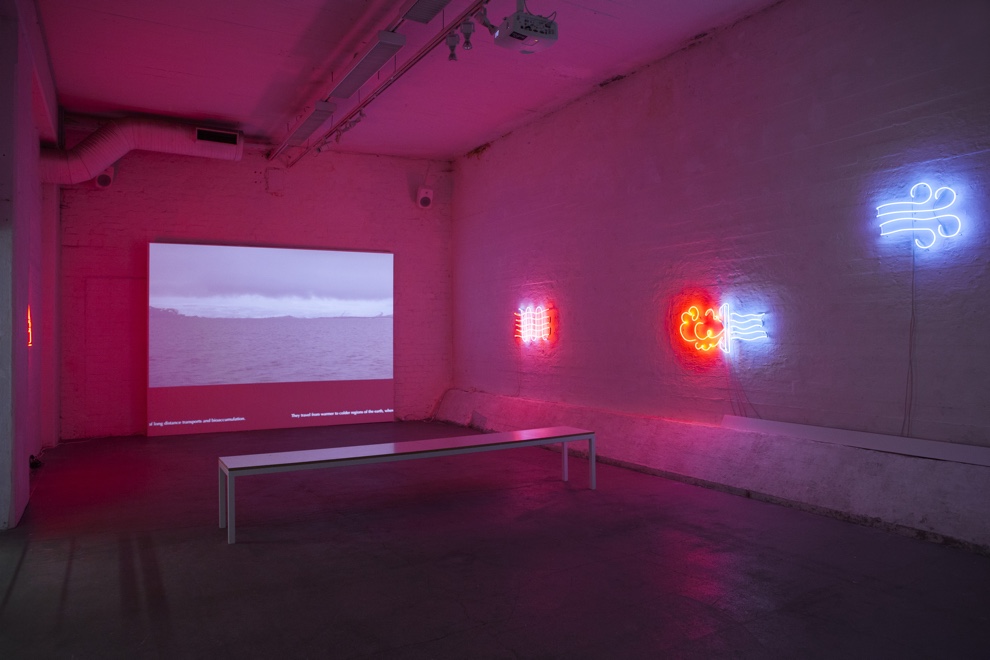
Hanna Husberg, In the Vast Ocean of Air, 2016. Photo by Anna Autio
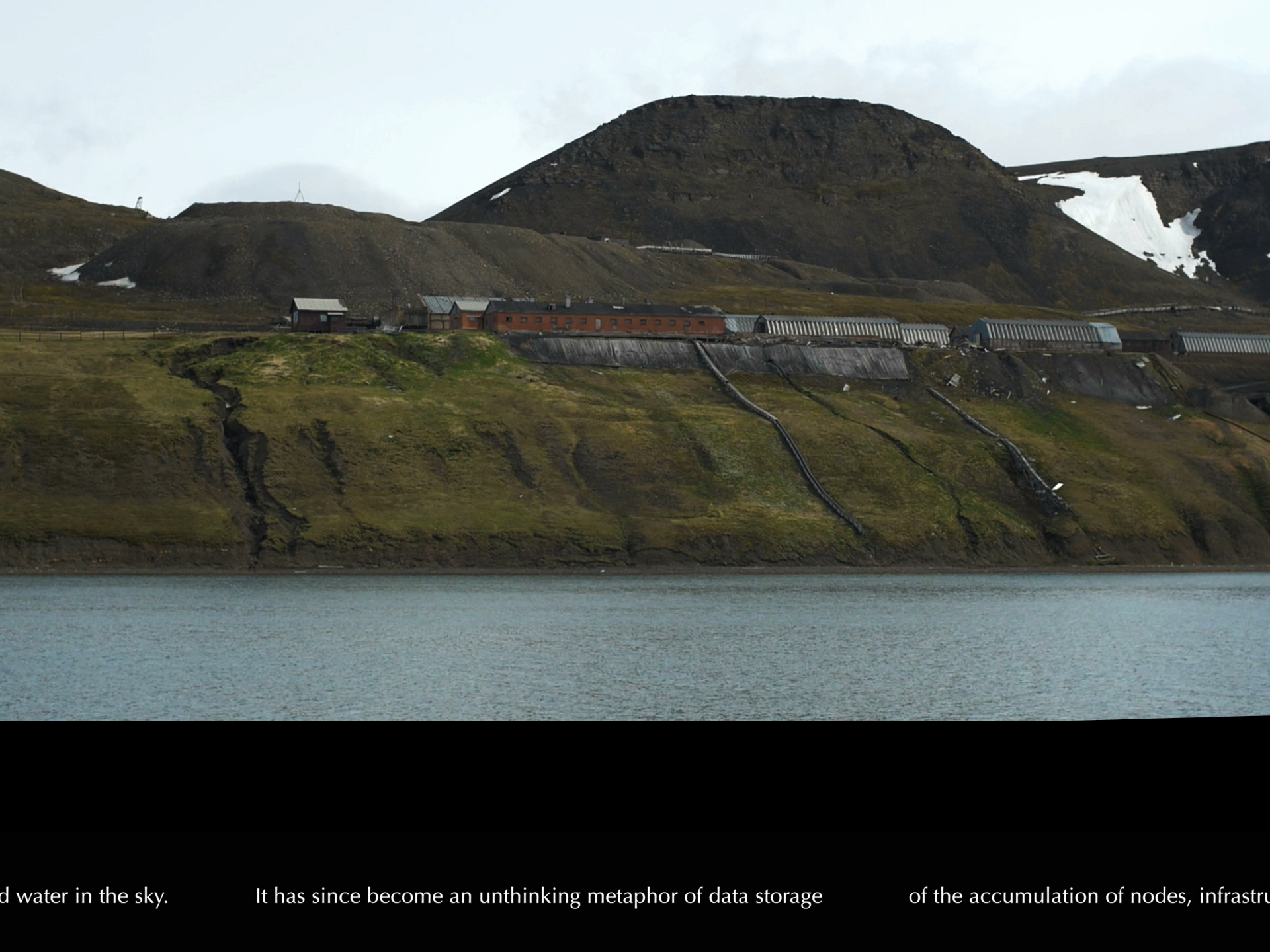
Hanna Husberg, In the Vast Ocean of Air, 2016
While most works about global warming focus on the very visible and material harbingers of change, Hanna Husberg‘s In the Vast Ocean of Air brings the emphasis on the most eluding, the most border-defying agent: air and the slow violence that is implicit in the compositional changes of the atmosphere.
The work comprises a video and a series of neon signs. The film is set in the Arctic archipelago of Svalbard, a region that has been subject to exploitation of natural resources since the early 1600s and also a region where the effects of climate change are particularly tangible, with temperatures getting shockingly warmer year after year.
As for the 5 neon signs, they are lit by ionised neon and argon gas producing their orange-red and blue glow. The signs evoke the carefully controlled temperatures found inside buildings all over the globe. Deriving, in large extent, from fossil fuels this energy to control the air is also a remnant of warmer climates in times past, that, while permitting vast accumulation of plants at high latitudes, would, however, be inhospitable for us humans.
Photos from the opening of the exhibition:
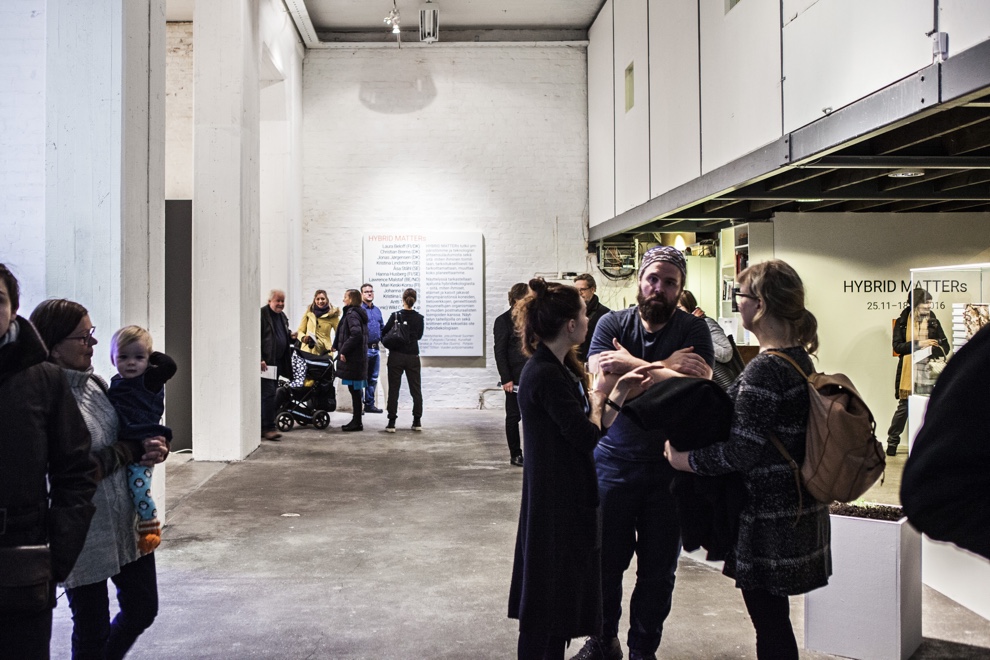
Exhibition opening. Photo by Anna Autio
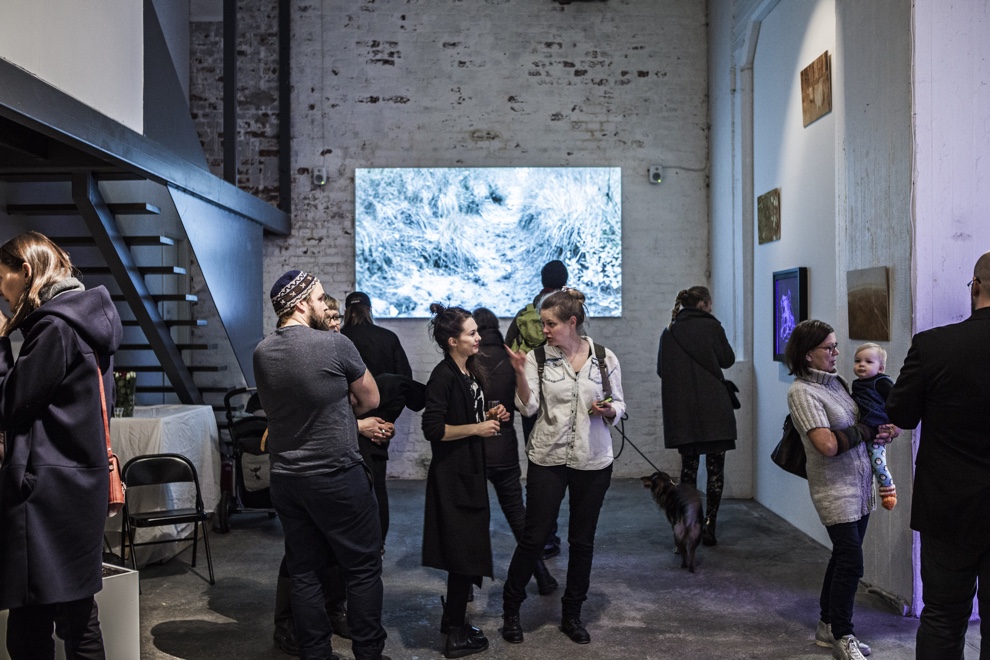
Exhibition opening. Photo by Anna Autio
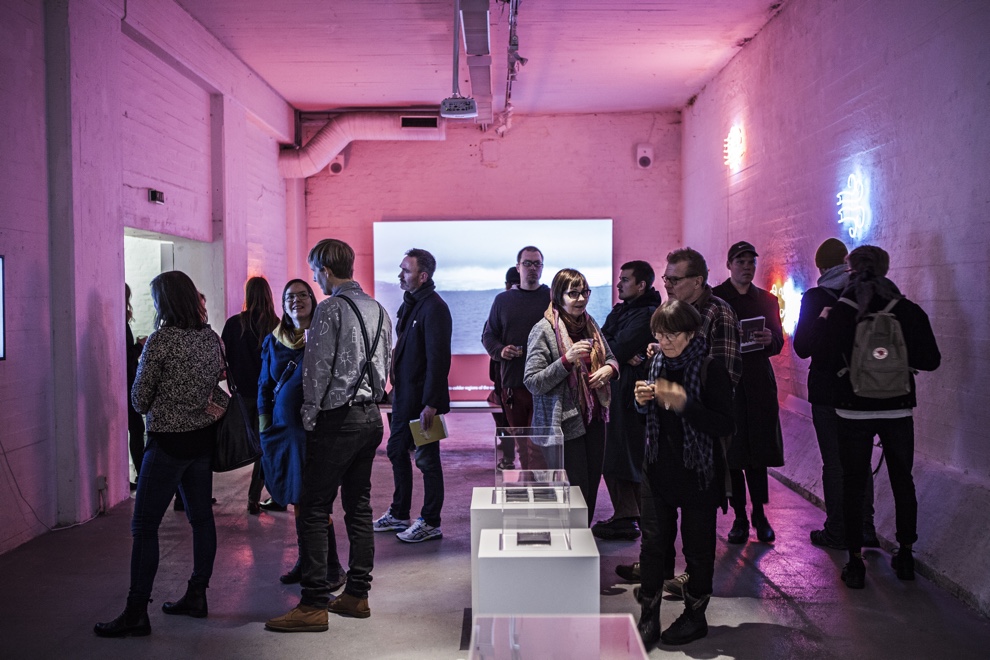
Exhibition opening. Photo by Anna Autio
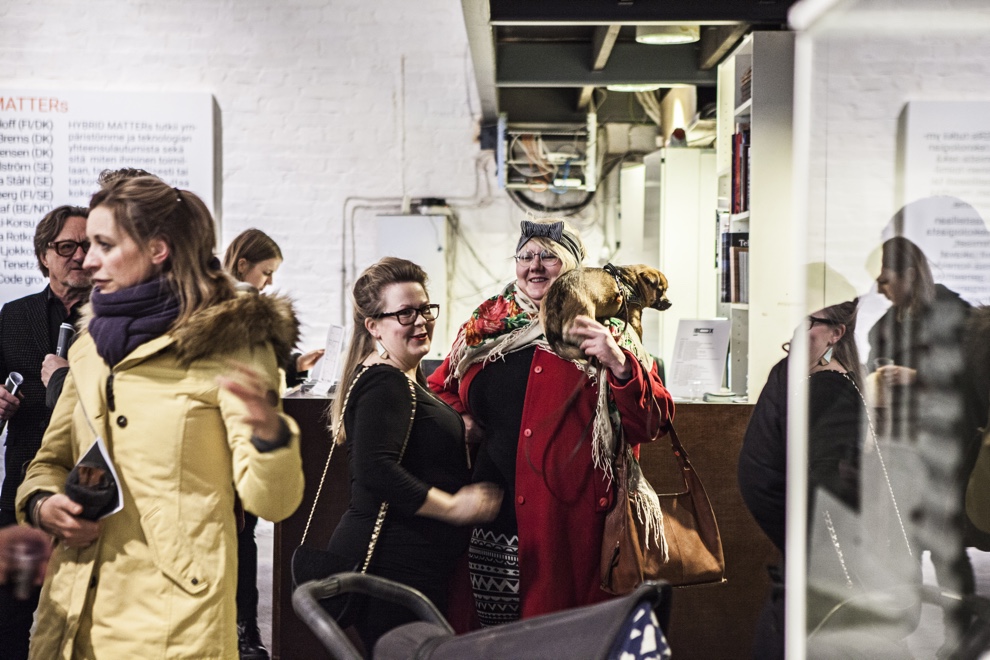
Exhibition opening. Photo by Anna Autio
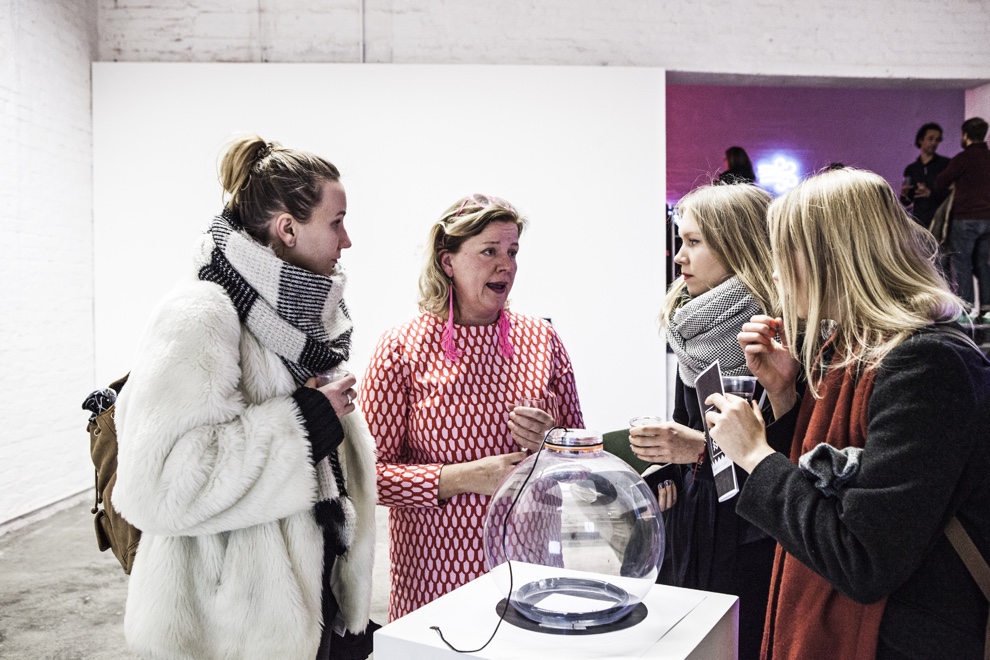
Exhibition opening. Photo by Anna Autio
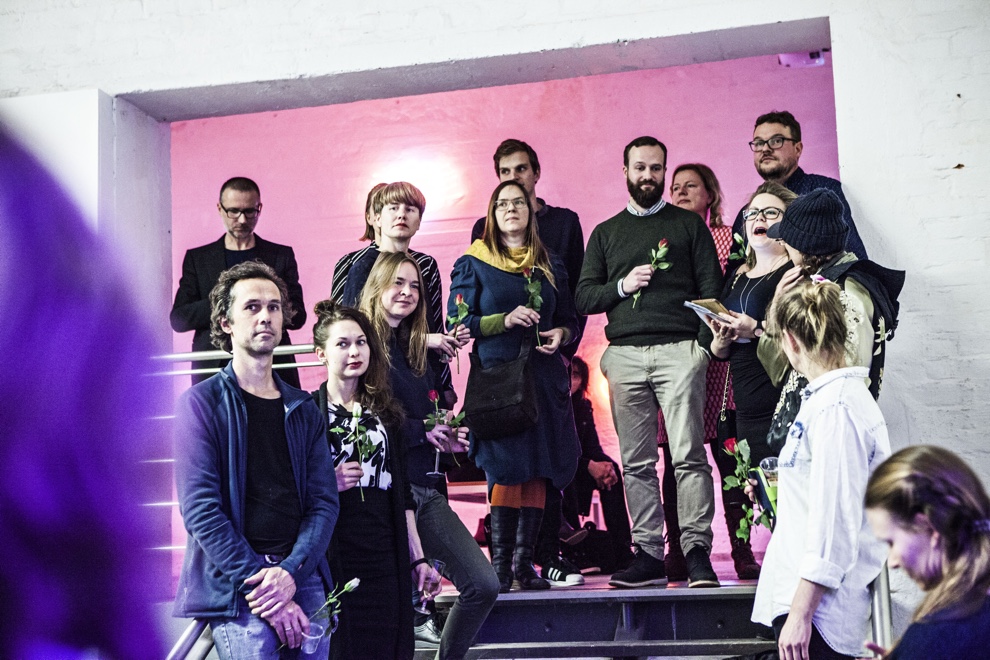
Exhibition opening. Photo by Anna Autio
The HYBRID MATTERs exhibition, opened at Forum Box in Helsinki last November. It was part of the HYBRID MATTERs Nordic art&science network program which investigates the convergence of our environment with technology and essentially the intentional and unintentional transformation of our planet through human activity. The program took the form of a series of researches, encounters, art commissions, exhibitions and a symposium. I got the chance to attend the symposium and i’ll write down my notes about it very soon!
Previously: Albedo Dreams. Experiments in DIY climate manipulation, HYBRID MATTERs: The urks lurking beneath our feet and The Christmas tree, your typical postnatural organism.

